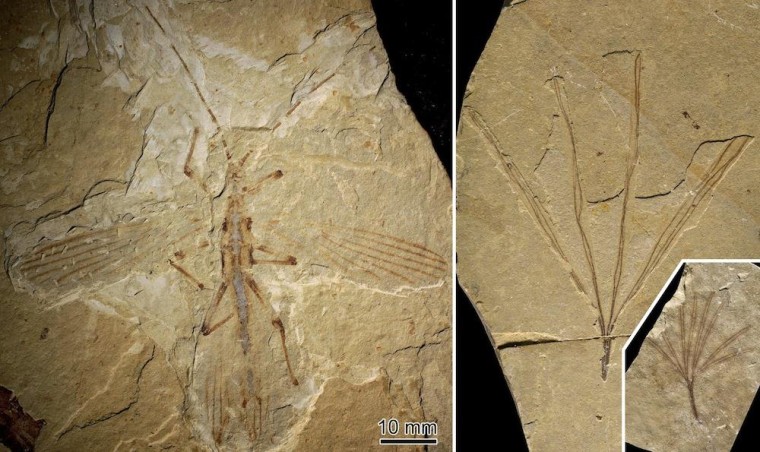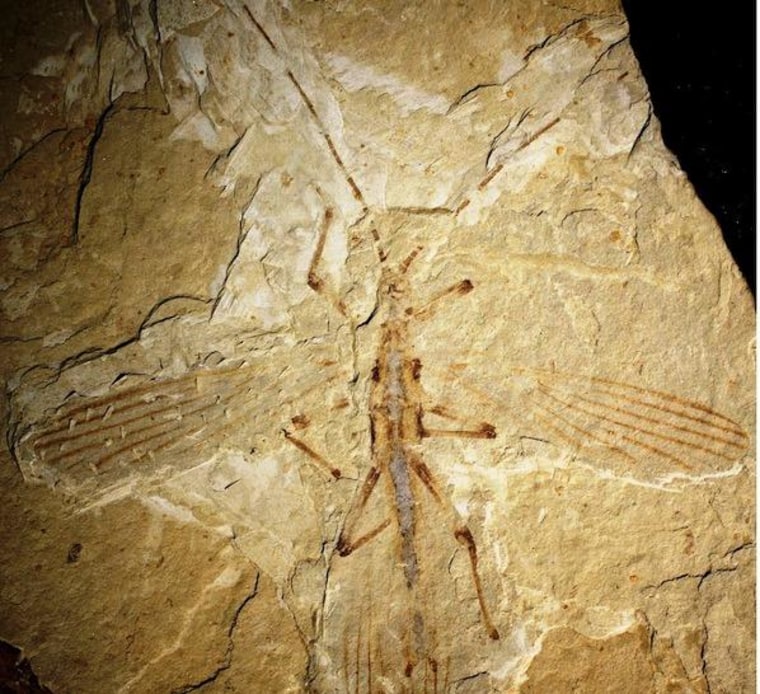The oldest-known stick insect to mimic a plant has been unearthed in China.
The newly discovered species — an extinct, distant relative of living stick insects — dates to the early Cretaceous Period, roughly 126 million years ago.
The buggy impostor likely used its leaflike appearance to hide from tree-climbing predators that dined on insects, said study co-author Olivier Béthoux, a paleontologist at the Center of Paleobiodiversity and Paleoenvironment Research at the National Museum of Natural History in Paris. [Locked in Stone: A Gallery of Fossilized Insects]

The leaf look-alike was discovered in a deposit from the Yixian formation in China, where a diverse array of well-preserved dinosaurs, plants and insect fossils from the Cretaceous Period have been unearthed in recent decades.
The newly discovered species, Cretophasmomima melanogramma, sported wings with thin, dark, parallel lines threading through them. When still, the wings created a tonguelike shape that hid the insect's abdomen. In the same fossil layer, researchers found a distant relative of the gingko plant with pale leaves and similar dark-veined lines running through it.
The discovery of both specimens suggests that the insect had evolved gingko-leaf mimicry to evade predators.
The findings were published Wednesday in the journal PLOS ONE.
